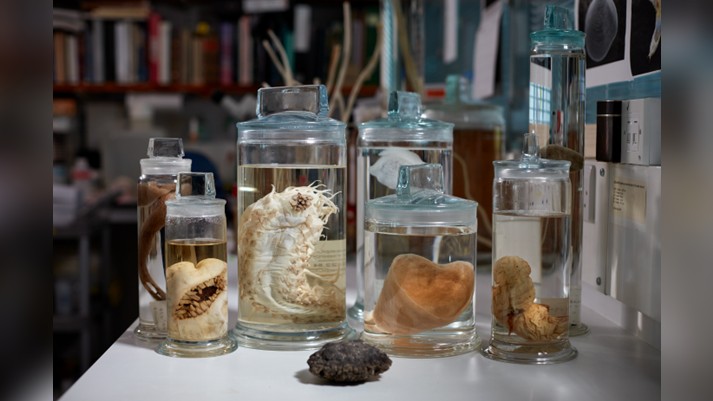
More than 5,000 undescribed animal species have been discovered in the depths of a massive "pristine wilderness" in the Pacific Ocean, a new study shows. But researchers warn they could soon be wiped out by deep-sea mining.
The Clarion-Clipperton Zone (CCZ) is a fracture zone — a large scar of deformed seafloor created by tectonic plate movements — that stretches from Mexico to Hawaii and covers around 2.3 million square miles (6 million square kilometers), which is around 3.5 times the area of Alaska.
The CCZ seafloor, which ranges from around 2.5 to 3.7 miles (4 to 6 kilometers) below the ocean surface, is covered with potato-size spherical nodules that are rich in highly desired metals such as manganese, cobalt and nickel, as well as small concentrations of extremely valuable rare earth elements , which has made it prime real estate for deep-sea mining companies.
In the study, published Thursday (May 25) in the journal Current Biology, researchers compiled the first comprehensive list of animal species found in the region using data from more than 100,000 records collected during research trips. The new database, known as the CCZ checklist, contains 5,580 animal species, of which only 438 are officially named. But the researchers estimate there may actually be between 6,000 and 8,000 animal species living in the CCZ and that between 88% and 92% of them could be unidentified.
"There are so many wonderful species in the CCZ," study lead author Muriel Rabone, a deep-sea ecologist at the Natural History Museum in London, said in a statement. "With the possibility of mining looming, it's doubly important that we know more about these really understudied habitats."
Related: 10 bizarre deep sea creatures found in 2022
The biodiversity within the CCZ is very high. The species in the checklist belong to 27 phyla that can be further divided into 49 classes, 163 orders, 501 families and 1,119 genera.
The most abundant phylum is arthropods — invertebrates with an exoskeleton such as sea spiders, barnacles and crustaceans — which makes up 27% of the database; followed by annelids, or segmented worms, which makes up 18% of the list; and nematodes, or non-segmented worms, which makes up 16% of the species listed. Other groups include cnidarians, a phylum including jellyfish and corals; poriferans, or sponges; mollusks, which include nudibranchs, bivalves and cephalopods; and the nearly indestructible tardigrades.
Of the named species listed in the CCZ checklist, only six have been recorded living outside the CCZ, which suggests that a majority of the unidentified species listed are also endemic to the region.
The entire CCZ is beyond the national jurisdiction of any country, and as a result it is managed by the United Nations' International Seabed Authority (ISA). Deep-sea mining in areas beyond national jurisdiction is currently prohibited. But the ISA can grant contracts to mining companies to explore potential deep-sea mining sites. So far, the ISA has granted 17 contracts in the CCZ, covering 463,000 square miles (1.2 million square km).
The impacts of these exploratory surveys are currently limited. But the ISA could start granting full mining contracts as soon as July 2023 following the deadline for member nations to agree on new mining regulations. If no agreement is reached, companies can start applying for contracts based on draft regulations, which offer very limited environmental protections, New Scientist reported.
Deep-sea mining could potentially impact marine life in a number of ways, including seabed destruction, noise pollution, light pollution and sediment plumes that dump mining waste products directly into the water column, according to the Deep Sea Conservation Coalition — a group made up of more than 100 non-government organizations.
The study researchers say that follow-up studies into the unnamed species listed in the CCZ checklist must be carried out as soon as possible, so that mining companies can develop ways of minimizing their impacts on the marine environment.
"We share this planet with all this amazing biodiversity," Rabone said, "and we have a responsibility to understand it and protect it."







